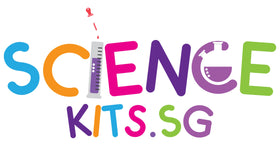
Science in the Kitchen: Fun (and Safe) Experiments with Food
Introduction
The kitchen is not only a place to cook delicious meals but also a fantastic lab for fun and educational science experiments. Using everyday ingredients, kids can explore chemical reactions, physics, and biology—all while playing with food! The best part? These experiments are safe and easy to conduct right at home. In this article, we’ll dive into some cool science experiments you can try with food, turning your kitchen into a science lab.
How Science is Used in the Kitchen
Science plays a crucial role in the kitchen, even when we're not conducting experiments. Every cooking process involves various scientific principles that shape the way food tastes, looks, and behaves. Here’s how science is a part of everyday cooking:
1. Chemical Reactions:

When baking a cake, the chemical reactions between ingredients like baking soda and an acid (such as vinegar or lemon juice) cause the cake to rise by producing carbon dioxide gas, making the batter light and fluffy.
2. Heat and Temperature:

Cooking is all about heat. Whether boiling, frying, or roasting, the application of heat causes chemical changes that transform raw ingredients into cooked food. Proteins denature, sugars caramelize, and starches gelatinize—giving us the textures and flavors we love.
3. Fermentation:

Many foods rely on fermentation, a biological process where microorganisms like yeast and bacteria break down sugars. This is the science behind bread rising, yogurt developing its tangy flavor, and the fizz in kombucha.
4. Emulsification:

Ever wonder how mayonnaise is made? Emulsification is the science of blending two liquids that usually don't mix (like oil and water) into a stable mixture. Eggs, mustard, and other emulsifiers help to create smooth sauces and dressings.
5. Preservation:

Techniques like pickling, drying, and freezing help preserve food by inhibiting the growth of bacteria or slowing down spoilage. Understanding the science of food preservation allows us to store food for longer without it going bad.
Fun (and Safe) Science Experiments

Concepts: Chemistry, Surface Tension
Materials Needed:
- Whole milk
- Dish soap
- Food coloring
- Cotton swab
- Shallow dish
Instructions:
- Pour the milk into a shallow dish until it covers the bottom.
- Add drops of food coloring around the milk’s surface.
- Dip a cotton swab into dish soap, then gently touch it to the surface of the milk.
- Watch as the colors swirl and mix, creating a rainbow effect!
What They’ll Learn: This experiment teaches kids about surface tension and how soap interacts with fats in the milk, breaking the tension and causing the colors to swirl.
2. Baking Soda and Vinegar Volcano

Concepts: Chemical Reactions, Acids and Bases
Materials Needed:
- Baking soda
- Vinegar
- Dish soap (optional)
- Food coloring (optional)
- A cup or bottle
Instructions:
- Fill the cup or bottle halfway with vinegar.
- Add a few drops of food coloring and dish soap for a more dramatic effect.
- Add baking soda to the vinegar and watch the "lava" erupt!
What They’ll Learn: Kids will see how acids (vinegar) react with bases (baking soda) to produce carbon dioxide gas, causing the bubbly eruption.
3. Homemade Ice Cream in a Bag

Concepts: Physics, States of Matter
Materials Needed:
- 1 cup of milk or cream
- 1 tablespoon of sugar
- ½ teaspoon vanilla extract
- Ice
- ½ cup of salt
- Two zip-top bags (one small, one large)
Instructions:
- In the small bag, combine the milk, sugar, and vanilla extract. Seal it tightly.
- Fill the large bag with ice and salt.
- Place the small bag into the large bag and shake vigorously for about 5-10 minutes.
- Open the small bag and enjoy your homemade ice cream!
What They’ll Learn: This experiment teaches kids how salt lowers the freezing point of ice, which helps the milk mixture freeze into ice cream. It’s a fun way to explore the states of matter.

Concepts: Crystallization, Chemistry
Materials Needed:
- 1 cup of water
- 3 cups of sugar
- Food coloring (optional)
- A wooden skewer or string
- A glass jar
Instructions:
- Heat the water until it’s boiling, then slowly add the sugar, stirring until it dissolves completely.
- Add food coloring for colorful candy.
- Pour the sugar solution into the jar and suspend a skewer or string in the center of the liquid.
- Leave the jar undisturbed for a few days to allow crystals to grow.
What They’ll Learn: This experiment teaches kids about crystallization, as the sugar molecules form solid crystals from the solution. The longer they wait, the larger the crystals grow.
5. Invisible Ink with Lemon Juice

Concepts: Chemistry, Acids, Heat Sensitivity
Materials Needed:
- Lemon juice
- Q-tip or paintbrush
- Paper
- Heat source (like a lamp or hairdryer)
Instructions:
- Dip the Q-tip or paintbrush in lemon juice and write a secret message on the paper.
- Let the juice dry completely.
- To reveal the message, hold the paper up to a heat source, like a lamp or hairdryer.
- The heat will cause the message to appear!
What They’ll Learn: This experiment shows how lemon juice (an acid) oxidizes when exposed to heat, turning brown and revealing the hidden message.
Conclusion
Science in the kitchen isn’t just about cooking—it’s about exploring the fascinating world of chemistry, physics, and biology through fun, hands-on experiments. From chemical reactions that cause cakes to rise to the principles behind heat and preservation, science is present in nearly every kitchen task. Understanding how science is used in the kitchen helps kids appreciate the process of cooking while learning valuable scientific concepts. By trying these cool experiments with everyday ingredients, children can develop a deeper understanding of both the food they eat and the science that powers our daily lives. Next time you’re in the kitchen, try one of these fun experiments and see what scientific wonders you can discover with food!
